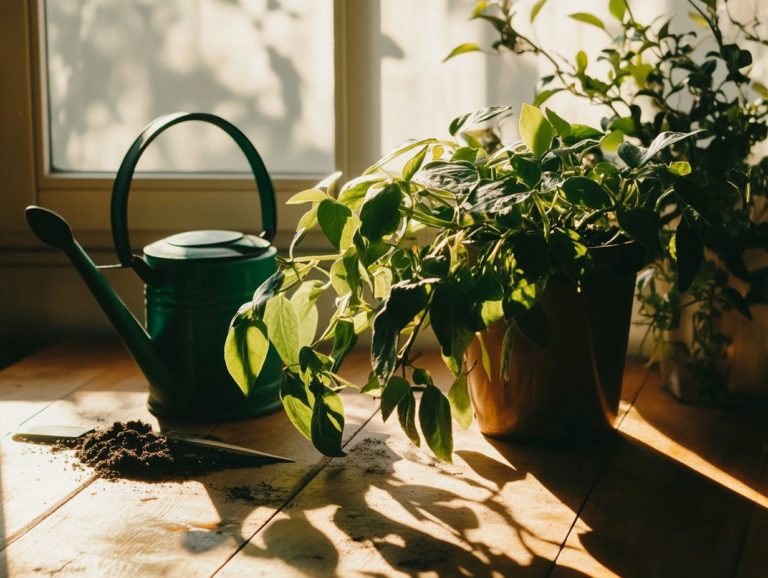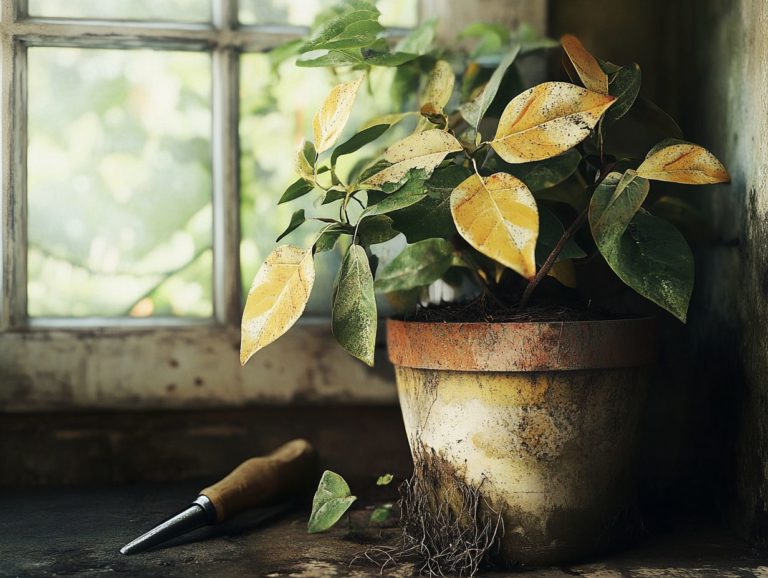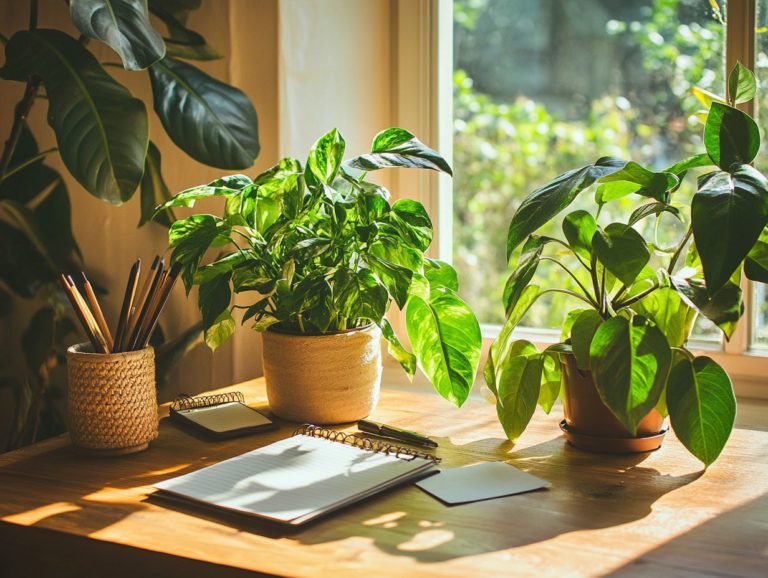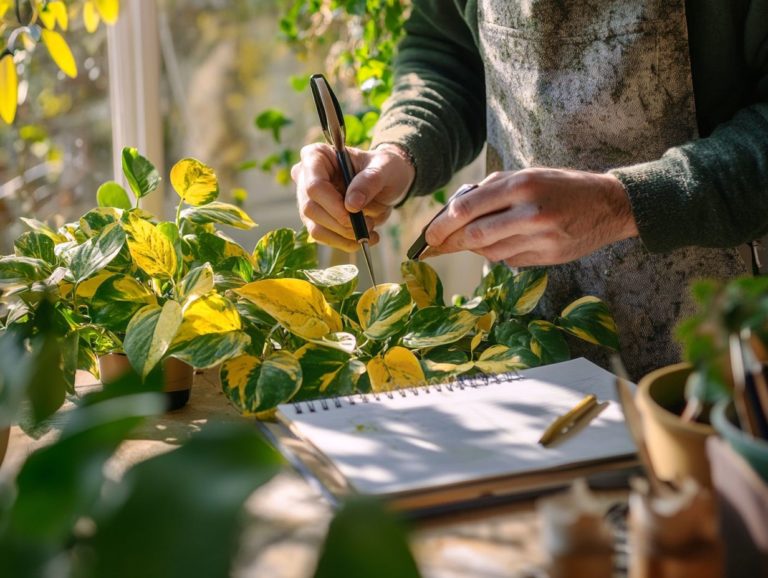How to Fix Compacted Soil Problems
Compacted soil can be a stealthy adversary in your garden or landscape. It quietly chokes off plant growth and disrupts water drainage, especially in areas affected by foot traffic and heavy machinery.
Understanding the causes of this issue is crucial for mitigating its effects. This guide will help you identify compacted soil and recognize its telltale signs.
Let s dive into how you can revitalize your garden by fixing compacted soil! You ll find practical methods for aerating and enhancing soil conditions, including using organic materials in your compost blend. Adopting best practices for preventing soil compaction will empower you to maintain a robust, vibrant garden ecosystem.
Explore these insights to restore your soil’s vitality and improve soil quality!
Contents
- Key Takeaways:
- Understanding Compacted Soil
- Signs of Compacted Soil
- Fixing Compacted Soil
- Preventing Compacted Soil
- Frequently Asked Questions
- 1. What is compacted soil and how does it affect plants?
- 2. How can I tell if my soil is compacted?
- 3. Can I fix compacted soil without digging it up?
- 4. How often should I aerate my soil to prevent compaction?
- 5. Can compacted soil problems be fixed in a short amount of time?
- 6. How can I prevent soil compaction in the future?
Key Takeaways:
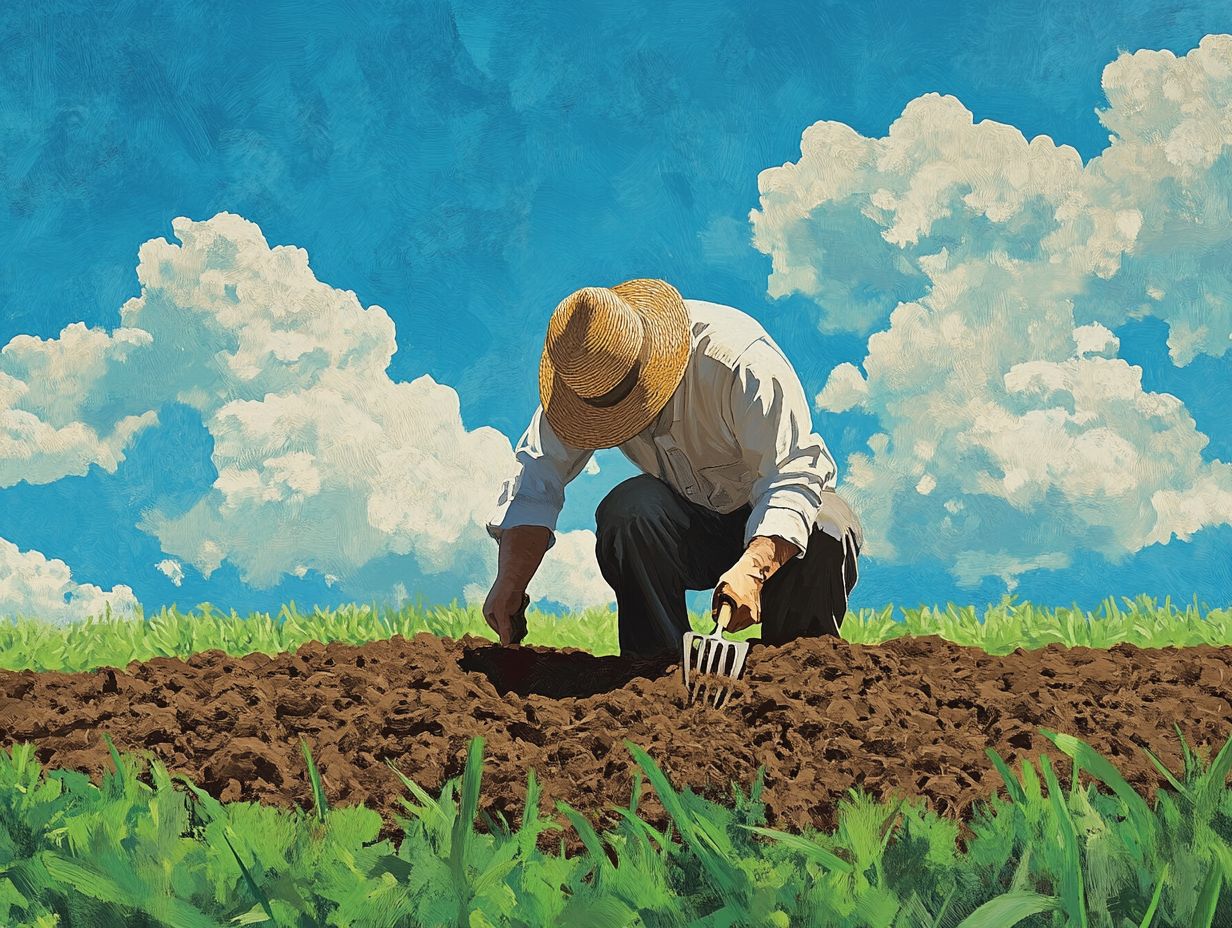
- Compacted soil harms plant growth and soil health, especially in clay-heavy areas.
- Identifying and assessing the signs of compacted soil is essential for addressing the issue.
- Preventing compacted soil through proper management and aeration methods is key to maintaining healthy soil.
Understanding Compacted Soil
Grasping the nuances of compacted soil is crucial for anyone diving into gardening or community gardening. It profoundly affects soil quality, nutrient circulation, and overall plant vitality. Gardening tips on improving soil health can make a significant difference.
Compacted soil arises when particles are pressed tightly together. This diminishes pore space and creates air pockets that obstruct water movement and root growth. Compaction can stem from sources such as foot traffic, heavy machinery, and livestock movement, all of which degrade soil structure.
To enhance soil health and optimize your gardening efforts, it s essential to understand the causes and consequences of soil compaction, along with effective management strategies.
Causes and Effects of Compaction in Soil Health
Various factors contribute to soil compaction, such as foot traffic, heavy machinery, and livestock movement. Each can significantly impact soil health.
When soil becomes compacted, its structure changes, resulting in increased density. This often leads to the formation of a hard pan, particularly in clay-heavy soils. This dense layer obstructs both water infiltration and air circulation two elements crucial for root development.
As a result, your gardening efforts may fall short, with plants struggling to establish robust root systems necessary for accessing essential nutrients and water. You might observe stunted growth and disappointing yields, underscoring the urgent need to tackle soil compaction issues. By addressing these challenges, you can foster a more conducive environment for your plants to thrive.
Signs of Compacted Soil
Recognizing the signs of compacted soil is essential for maintaining optimal soil health. Doing so ensures efficient nutrient uptake and facilitates proper water percolation in your garden beds.
Identifying and Assessing Compaction

Identifying and assessing soil compaction can be achieved through several methods, including careful soil testing and visual checks of compacted areas.
One effective technique is using a soil penetrometer (a tool that measures resistance to penetration) for an objective evaluation of the soil’s compaction levels. Understanding soil structure is essential because it dictates the movement of air and water through the soil.
Aerating the soil, often done with tools like aeration spikes, machine aerators, or core aerators (tools that remove small plugs of soil to improve air and water flow), promotes nutrient and water movement while alleviating some of the compaction.
The presence of earthworms greatly enhances soil health, as these remarkable organisms create channels that facilitate drainage and improve aeration. They also boost nutrient availability and play a vital role in maintaining a healthy growing cycle.
Start revitalizing your garden today by addressing soil compaction!
Fixing Compacted Soil
To address compacted soil, you need to employ effective methods for airing out the soil and improvement. These strategies can dramatically enhance both plant growth and soil health, ensuring your garden flourishes.
Methods for Soil Aeration and Improvement
You have several effective methods at your disposal for soil aeration and improvement. These include mechanical aeration and the thoughtful incorporation of organic materials like aged manure and compost. These methods tackle air pockets and enhance nutrient circulation.
Employing coring machines, which are machines that remove small plugs of soil, allows you to efficiently let air, water, and nutrients penetrate deeper into the ground. If you prefer a more hands-on approach, traditional spading techniques can also be quite beneficial, especially in smaller gardens where turning the soil exposes those pesky compacted layers.
Want to supercharge your soil health? Try adding features like rain gardens. These not only manage excess water but also foster biodiversity. The natural filtration and absorption abilities of the plants in these gardens create an ideal environment for improved drainage and nutrient uptake, ultimately resulting in healthier plants and more bountiful yields.
Preventing Compacted Soil
Preventing compacted soil is crucial for upholding optimal gardening practices. By prioritizing effective soil management and incorporating organic materials, you create an environment where plants can truly thrive.
Your attention to soil health will not only benefit your garden but also enhance the overall vitality of your plants. This ensures efficient nutrient uptake throughout the growing cycle.
Best Practices for Soil Management
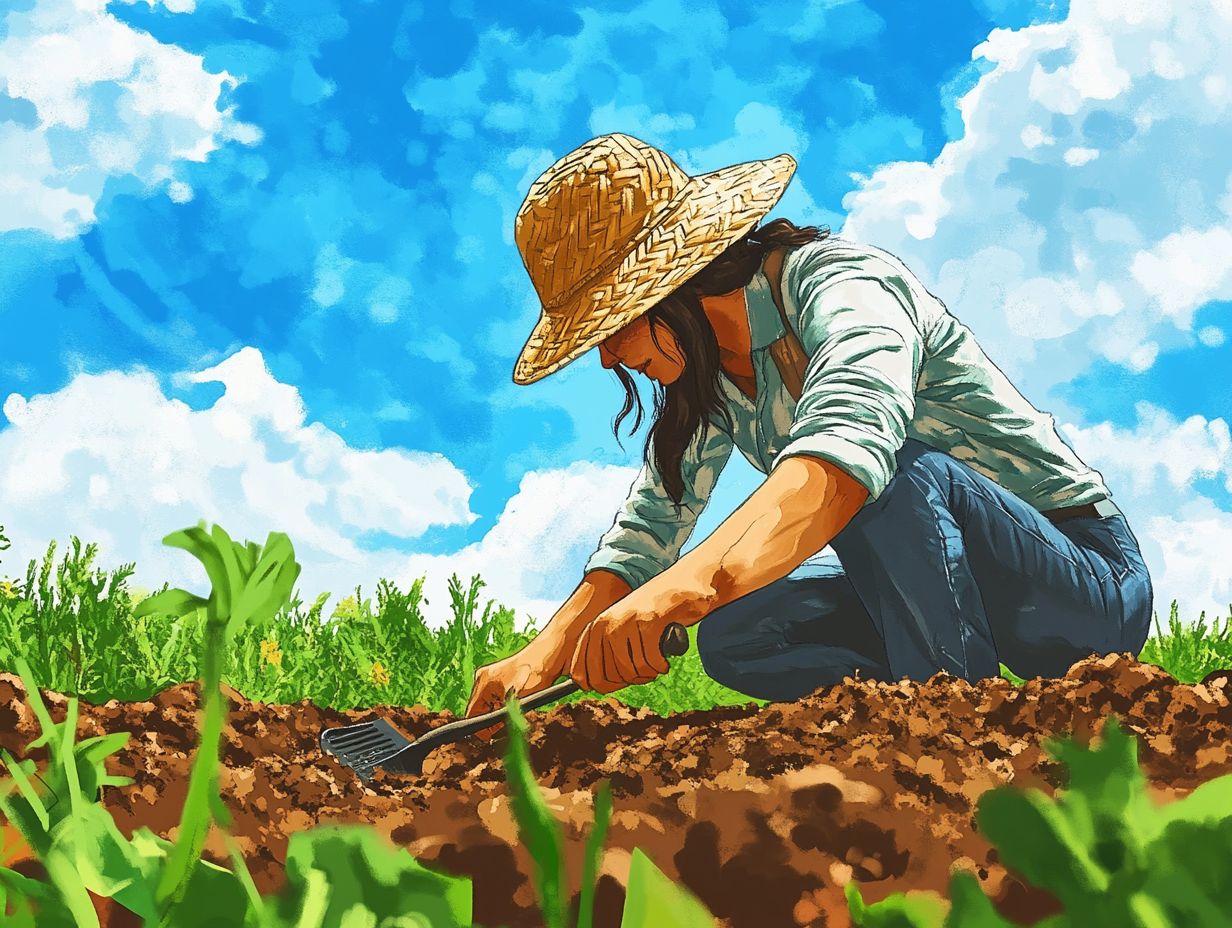
Implementing best practices for soil management is essential for enhancing nutrient uptake and maintaining optimal soil health in your gardening endeavors.
Regular soil testing is your secret weapon. It provides crucial insights into nutrient levels and pH balance, ensuring you make the right amendments at precisely the right time. Incorporating organic materials like compost or well-rotted manure can work wonders, significantly improving soil structure and aeration.
If you’re ever unsure about the best approach tailored to your specific gardening needs, consulting gardening experts can be a game changer. They offer invaluable guidance, helping you develop a soil management plan that prevents compaction and promotes sustainable practices.
Frequently Asked Questions
1. What is compacted soil and how does it affect plants?
Compacted soil is soil that has been pressed down and lacks proper air and water circulation. This can make it difficult for plant roots to grow and access nutrients, leading to stunted growth and poor health.
2. How can I tell if my soil is compacted?
There are a few signs that indicate compacted soil, including:
- Difficulty inserting a gardening tool
- Pooling of water after rain
- Slow or stunted plant growth
You can also do a simple soil compaction test by taking a handful of soil and trying to form it into a ball. If it stays together and doesn’t crumble easily, your soil may be compacted.
3. Can I fix compacted soil without digging it up?
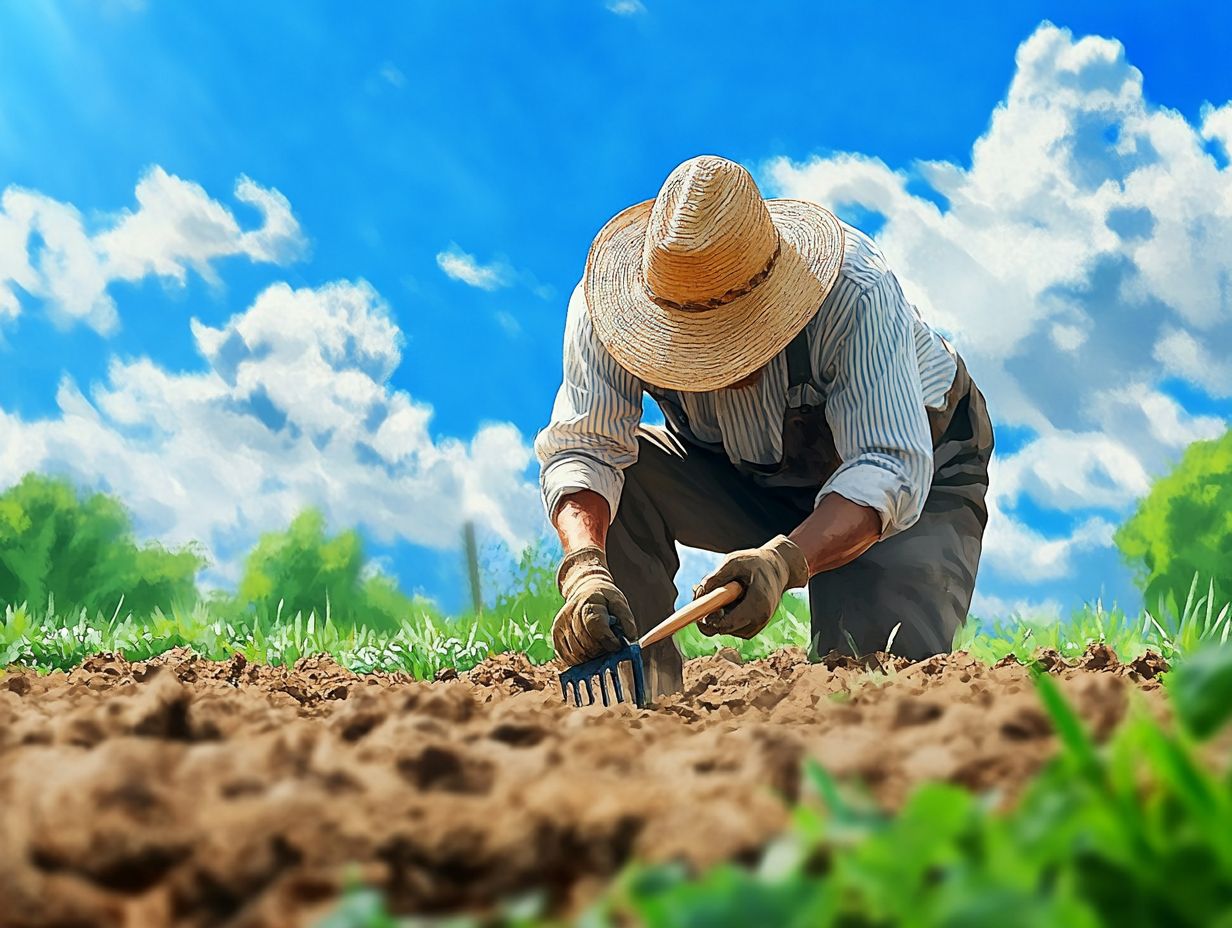
Yes, there are several methods you can try to fix compacted soil without digging it up. These include:
- Aerating the soil with a garden fork or aerator
- Adding organic matter such as compost or mulch
- Using a soil-tilling machine
4. How often should I aerate my soil to prevent compaction?
This will depend on the type of soil you have and how quickly it becomes compacted. In general, it’s recommended to aerate your soil at least once a year, preferably in the fall or spring when the soil is not too wet or dry.
5. Can compacted soil problems be fixed in a short amount of time?
It really depends on the severity of the compaction and the methods you use to fix it. Some methods, such as tilling and adding organic matter, can provide immediate relief, while others, like using cover crops, may take longer to see results.
Start implementing these tips today for a thriving garden!
6. How can I prevent soil compaction in the future?
To prevent hard soil, avoid walking or driving on garden beds. Working with soil when it’s wet can also lead to problems.
Consider using raised beds or containers for your plants. These methods can effectively keep your soil loose and healthy!


